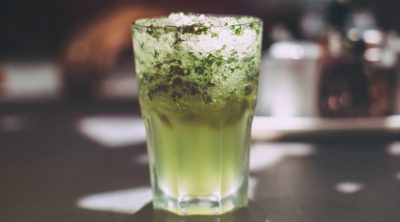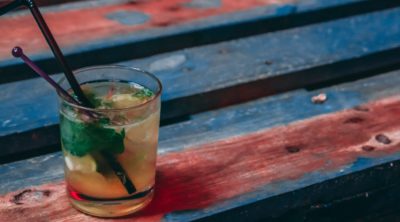
Absinthe is one of the oldest addictive herbal alcoholic drinks. It was banned for the last few decades and has made a comeback recently. Previously made only for commercial reasons, this drink can now be made at home. This article takes you through the steps.
Absinthe, a potent drink, was highly popular as a stress reliever and was one of the most addictive herbal beverages. It was popular for its low cost and a high alcohol content. This drink is usually made from herbs and can be made at home.
What is it?
Absinthe is made from wormwoods (Artemisia absinthium) and anise seeds. Wormwood is an herb originating from the Mediterranean region, with powerful healing properties from the Aster (Asteraceae) family. Thujone, a compound found in wormwood, is responsible for the psychedelic effects caused after consumption of this drink.
This alcohol was banned for a long time and made a comeback in Europe during the late 19th and early 20th century. Even though the drink is pale emerald green in color, it can be colored artificially using different herbs during the stage of maceration. A clear watery form of absinthe, commonly known as Blanche, is very popular. Another type of this alcohol is often referred to as la Bleue; a name given by the bootleggers of the old days.
Making this drink at home
A high quality absinthe is made using wormwood and other herbs during the distillation process. The three main components are wormwood, anise, and fennel. The bitterness and strength of the drink differ depending on the thujone content. During the early days, this alcohol was made without distilling through the herbal maceration process. Most constituents like thujone are extracted from wormwood and introduced into the alcohol during the maceration process.
Artificial color is also added during this process. The green color is derived from green herbs such as mint, petite wormwood, and other herbs with a high chlorophyll content. While making red absinthe, green herbs are excluded and only red colored herbs such as paprika are used. The cloudiness of the drink comes from the oils of the anise and fennel seeds.
Ingredients Used
1. Wormwood (Artemisia absinthium)
2. Roman or petite wormwood (Artemisia pontica)
3. Hyssop (Hyssopus)
4. Star anise (Illicium verum)
5. Anise seed (Pimpinella anisum)
6. Fennel seed (Foeniculum vulgare)
7. Lemon balm (Melissa officinalis)
8. Coriander (Coriandrum sativum)
9. Calamus (Acorus calamus)
10. Veronica (Veronica officinalis)
11. Cardamom (Elettaria cardamomum)
12. Thyme (Thymus vulgaris)
13. Lavender (Lavandula)
14. Sage (Salvia officinalis)
15. Mint (Mentha)
16. Angelica root (Angelica)
Steps for Making Absinthe
- The ingredients required for the mixture should be prepared at the same place where the alcohol will be made. The herbs should be ⅓ of a cup for every 750 ml of alcohol base. Everything must be cleaned thoroughly including your hands, the surface on which it will be prepared, and the herbs. The seeds should be ground and mixed thoroughly with the herbs.
- The ingredients need to be mixed with the alcoholic base and stored in sealed containers.
- The mixture should be stored in a dark warm room for 2 to 8 weeks so that the wormwood and other herbs are infused into the alcohol. The period of storage will directly influence the flavor. The flavor will be muddy and bitter if it is stored for too long, and dull if stored for a short duration.
- After the storage period is over, the mixture should be strained with a cheesecloth, coffee filter, or a similar material to remove the herbs. A distillation process is performed to reduce the bitterness. The distilled liquid, known as “Absinthe Blanche”, is clear and does not have much flavor. The second maceration will give the absinthe its true flavor and color.
- During the second maceration process, a very low quantity of wormwood is used to minimize the bitterness. The flavor remains strong as there is no distillation involved. Natural colors and flavors can be added at this stage. The second maceration should not be done after more than two months or else it may cause further bitterness.
- At this stage, the drink can be experimented with by making separate batches of different flavors using different herbs, instead of putting all the herbs into the same mixture. Different types of absinthe can be made by mixing the herbs independently.
- While mixing, take care of the quantity of alcohol in the distillate, otherwise the concoction will burn like a strong liquor. If there is a high quantity, the drink will be too bitter as the flavor would stick to the tongue. The alcohol can be sweetened by adding sugar or sweet-n-low syrup.
- The drink can then be bottled for storage or consumed.
The process of making absinthe has been perfected over the years and it has become a very popular beverage.


